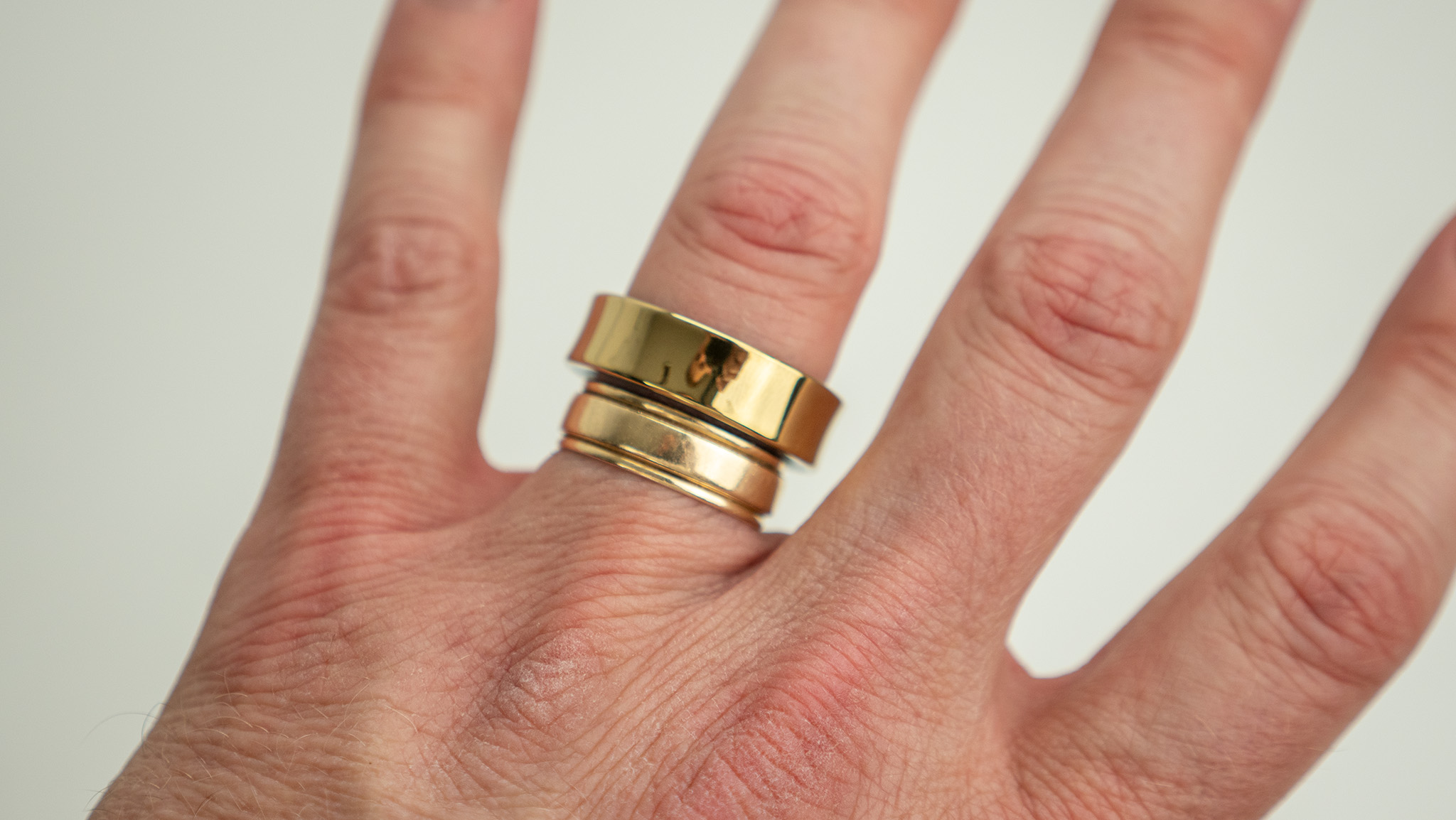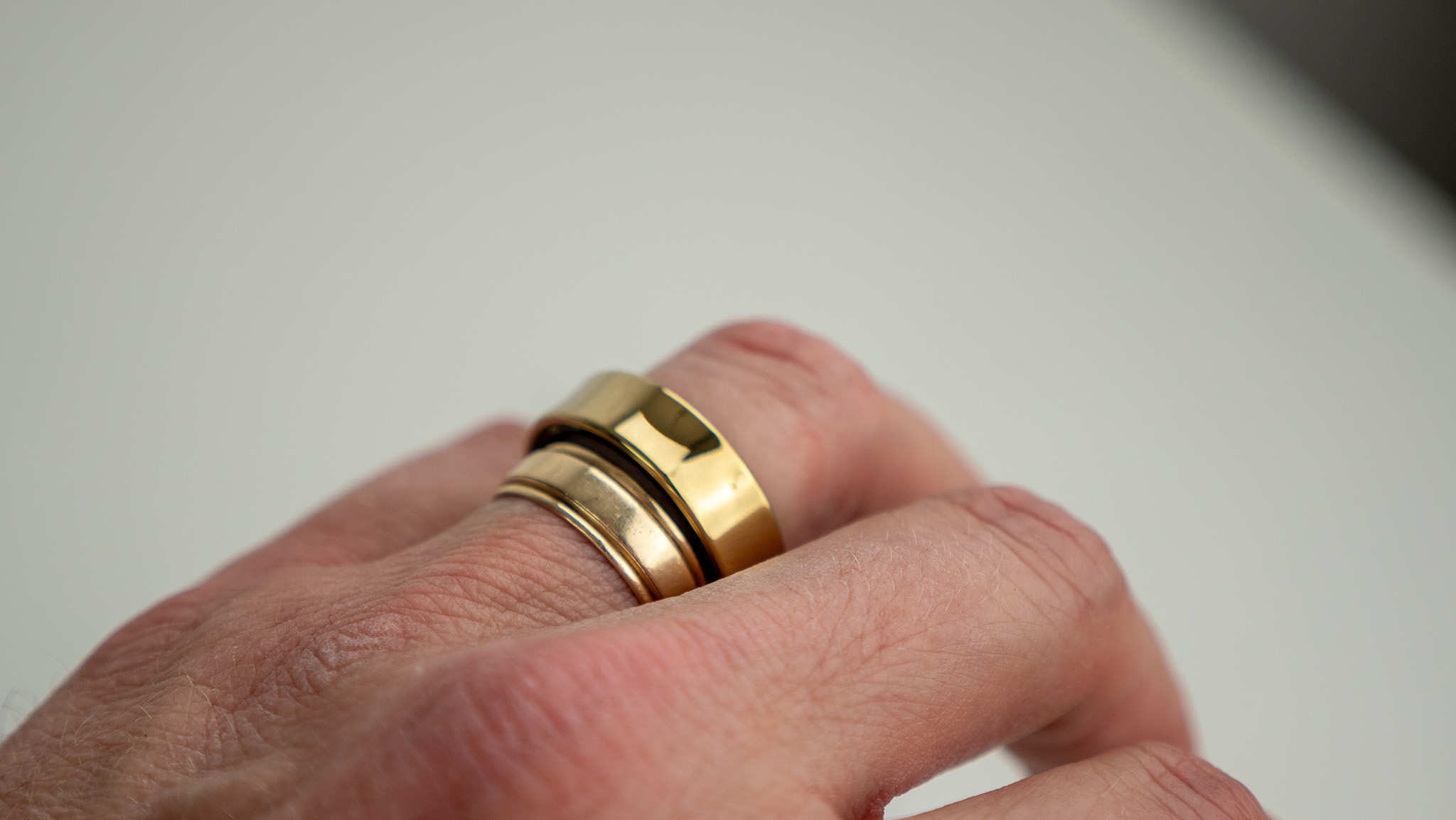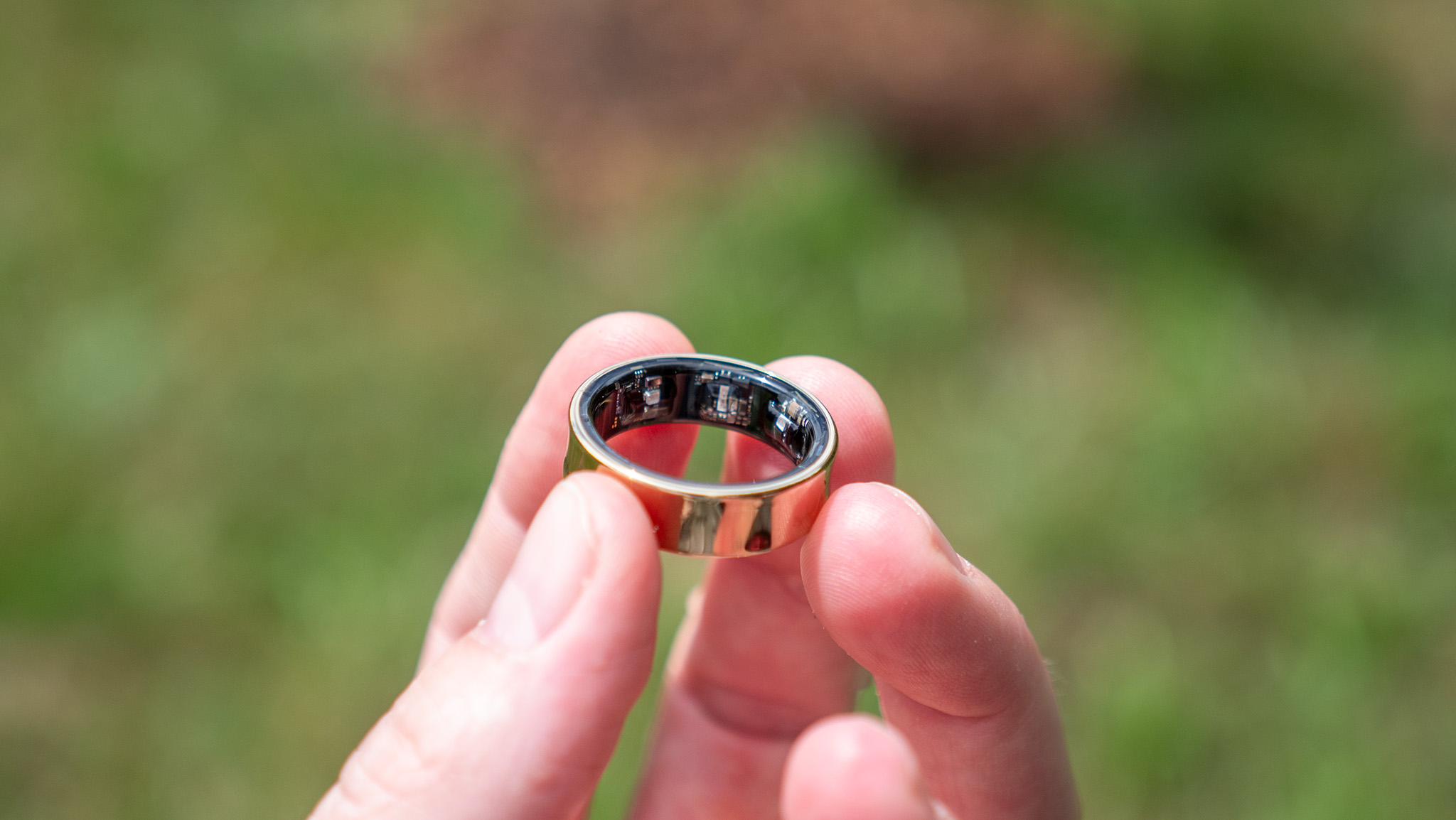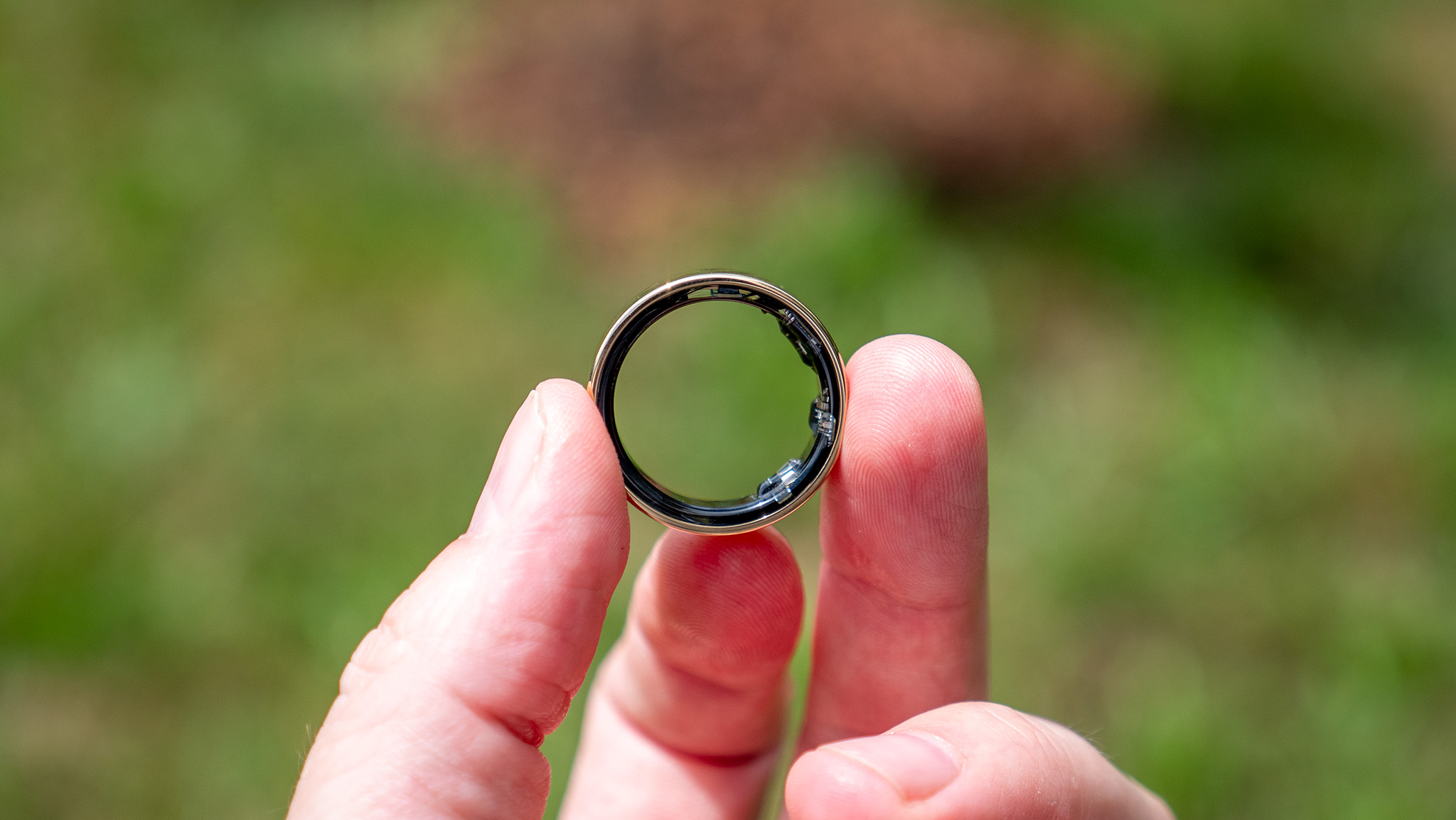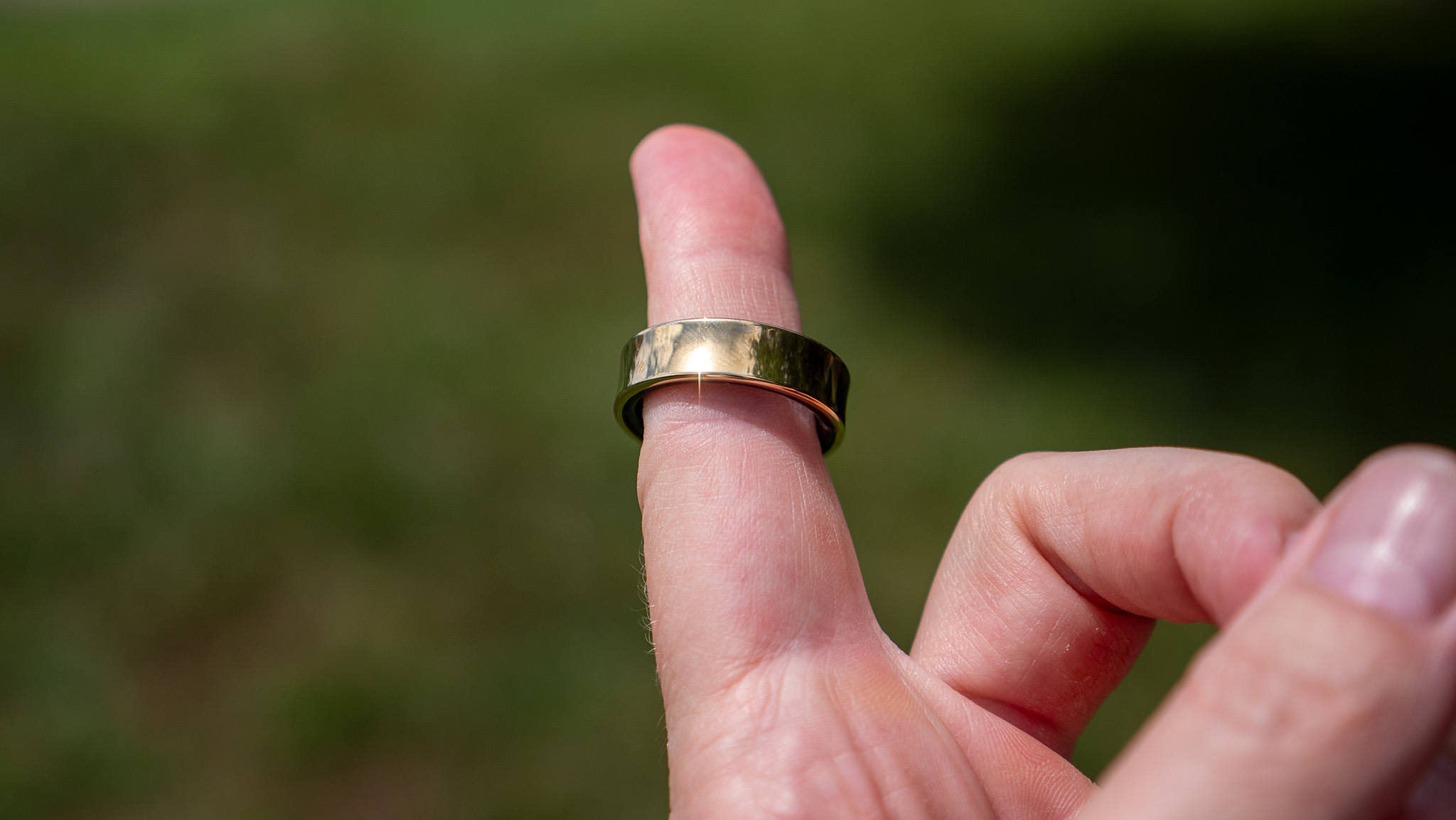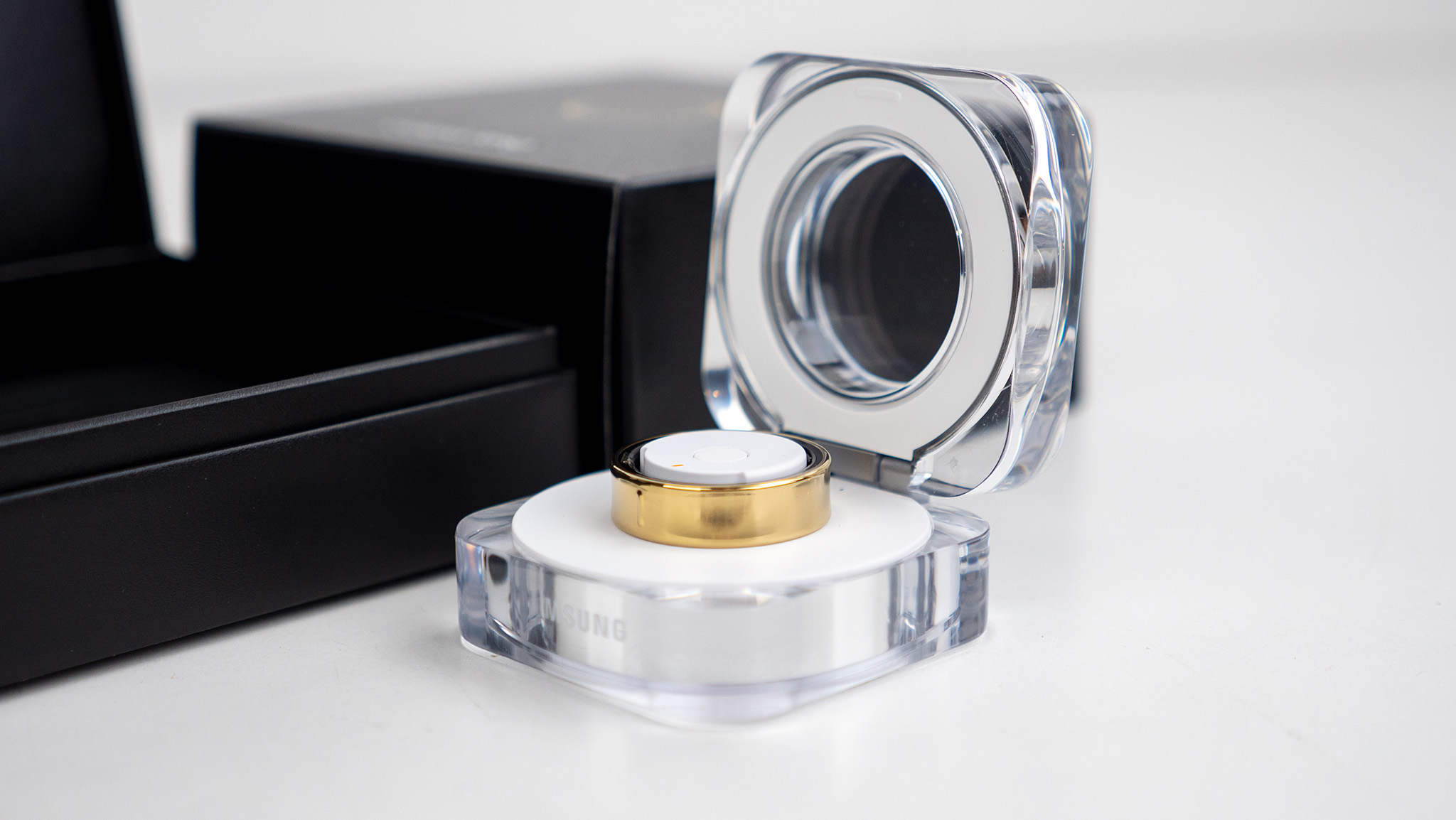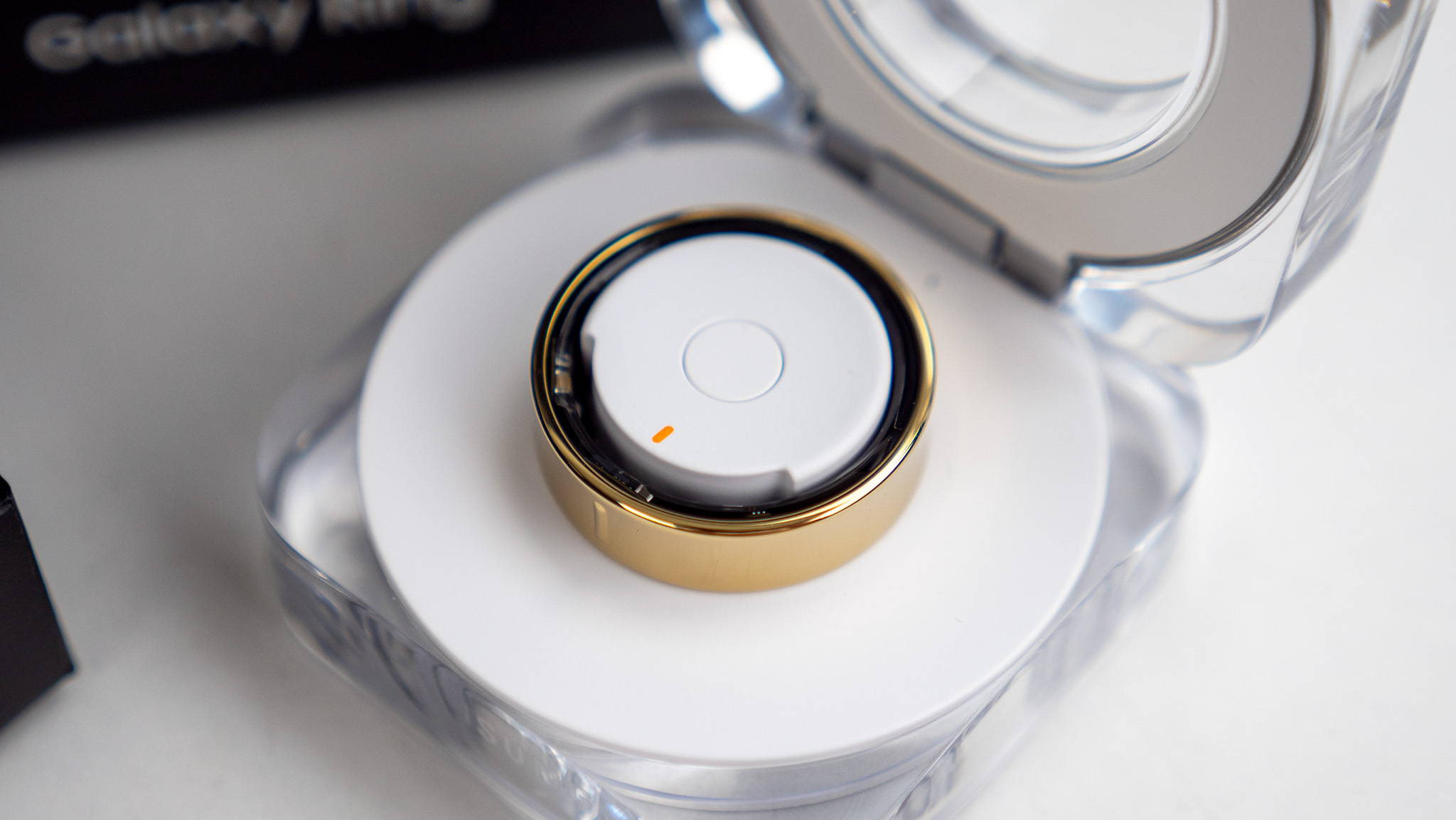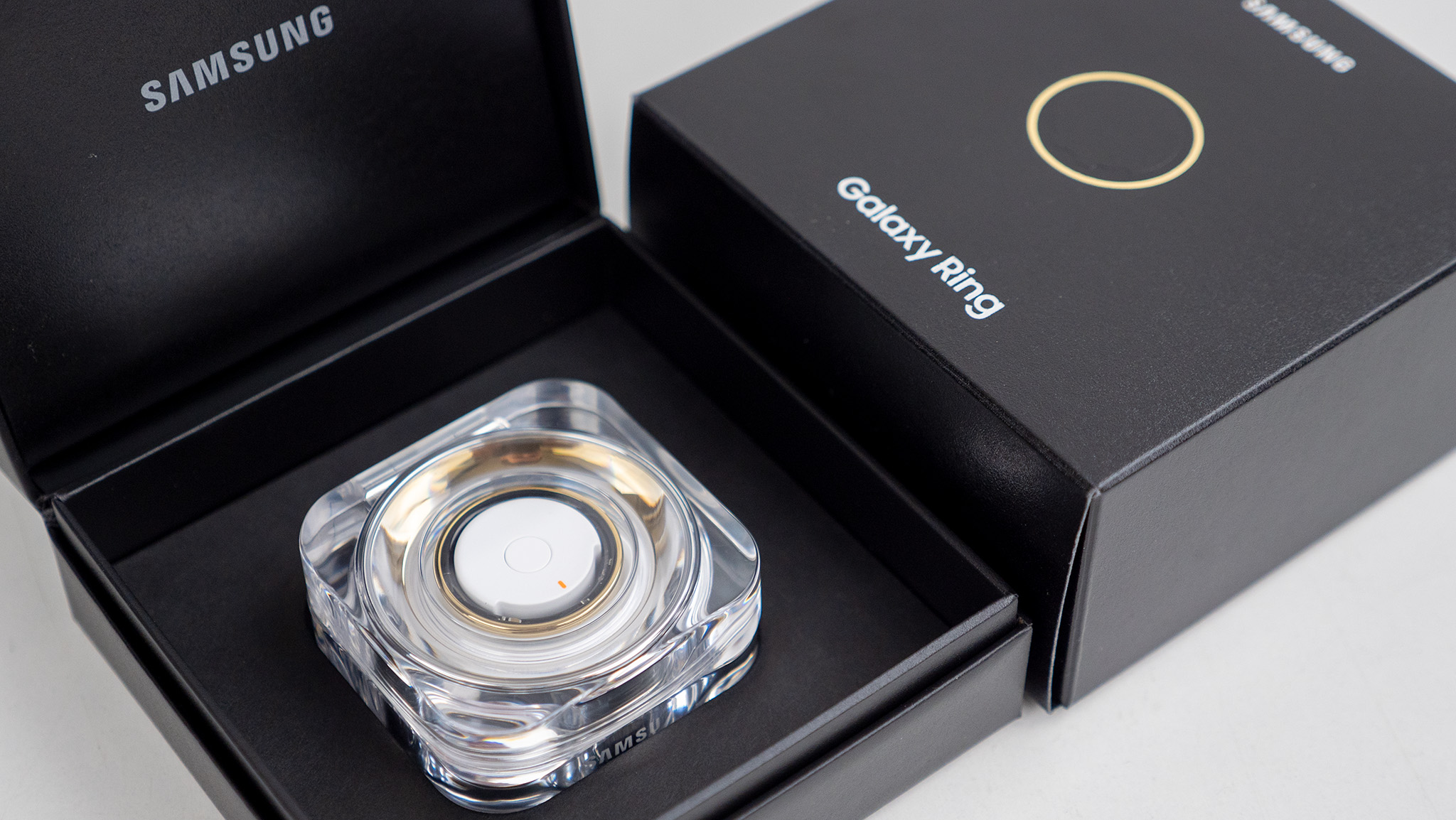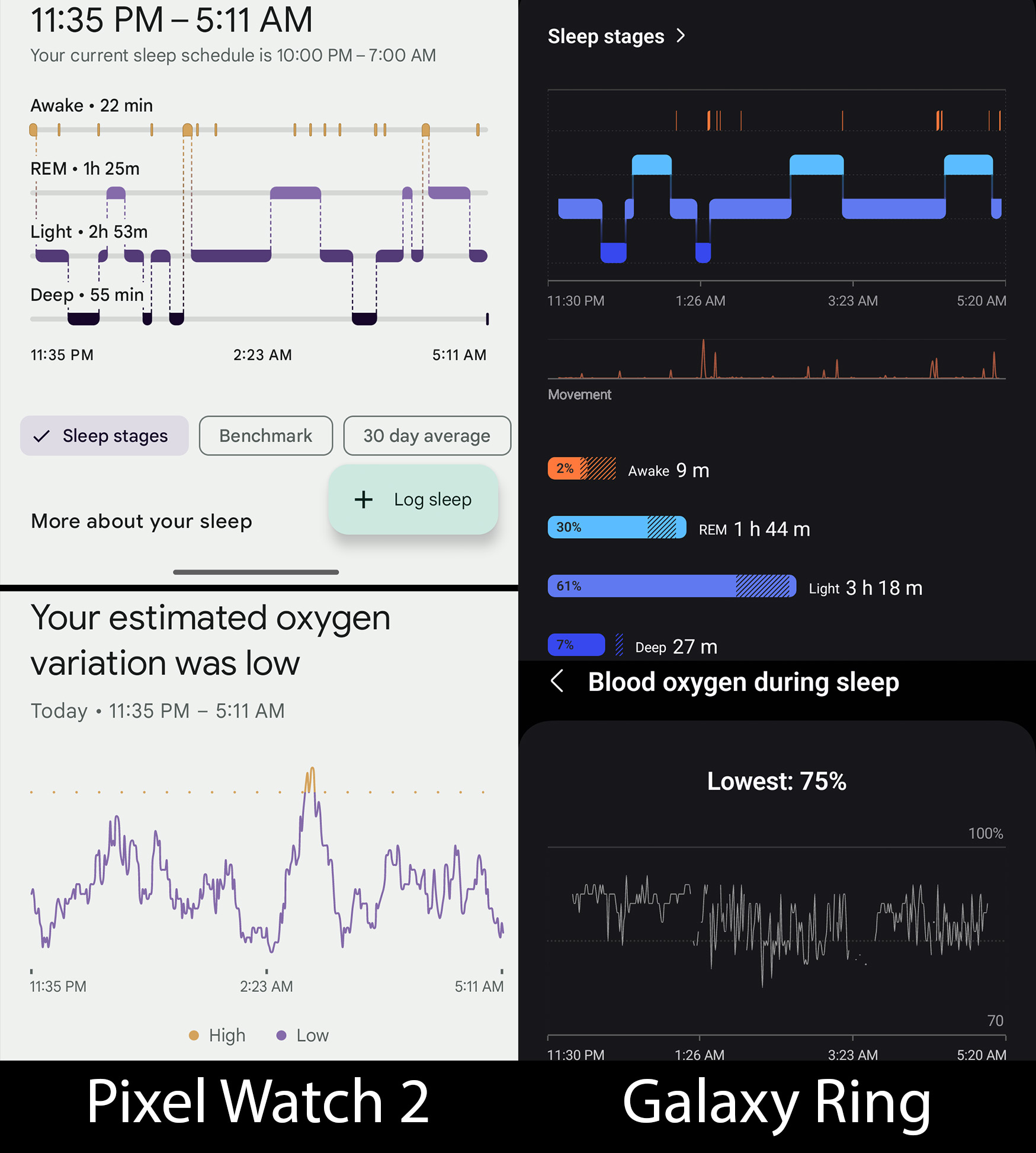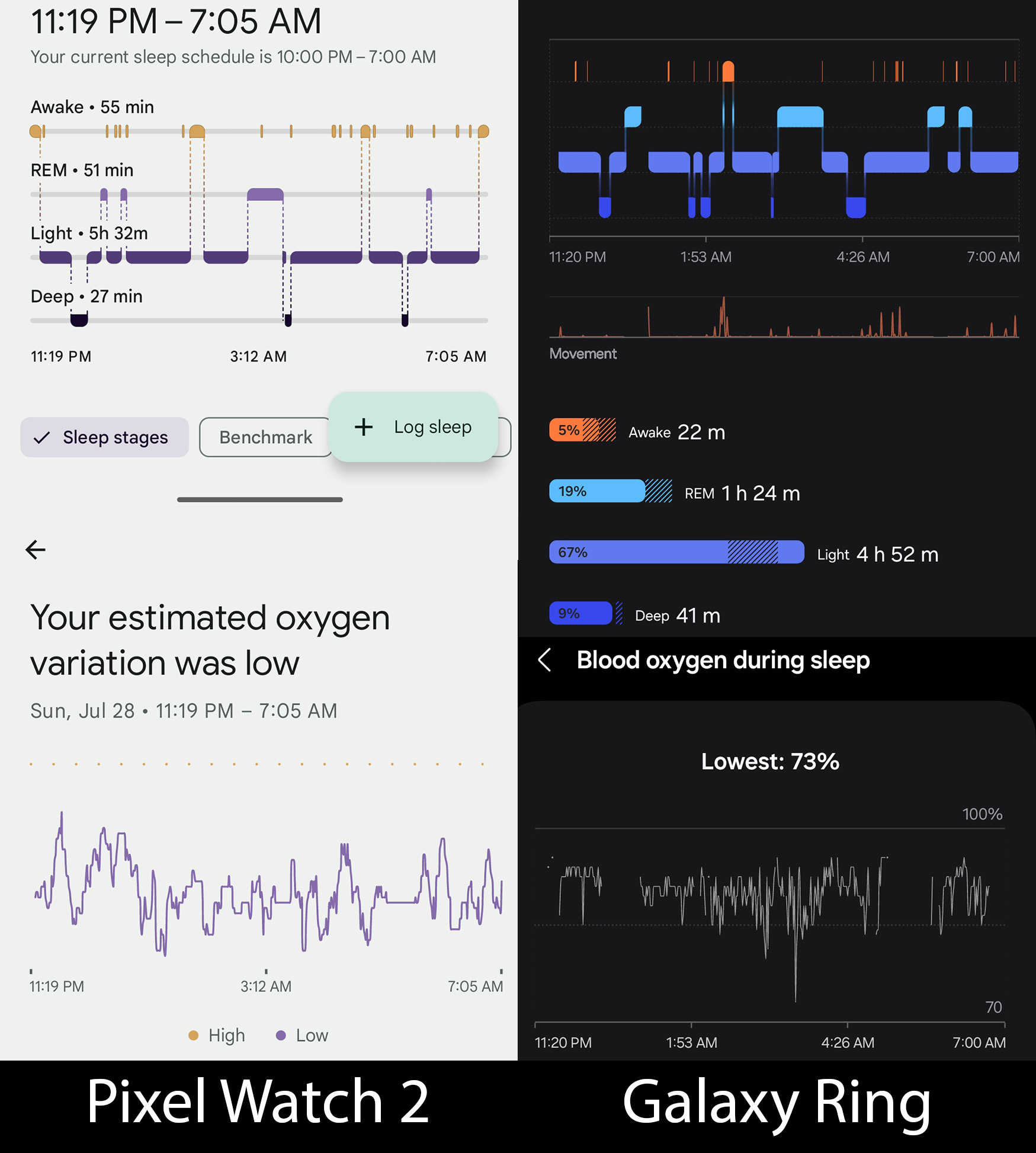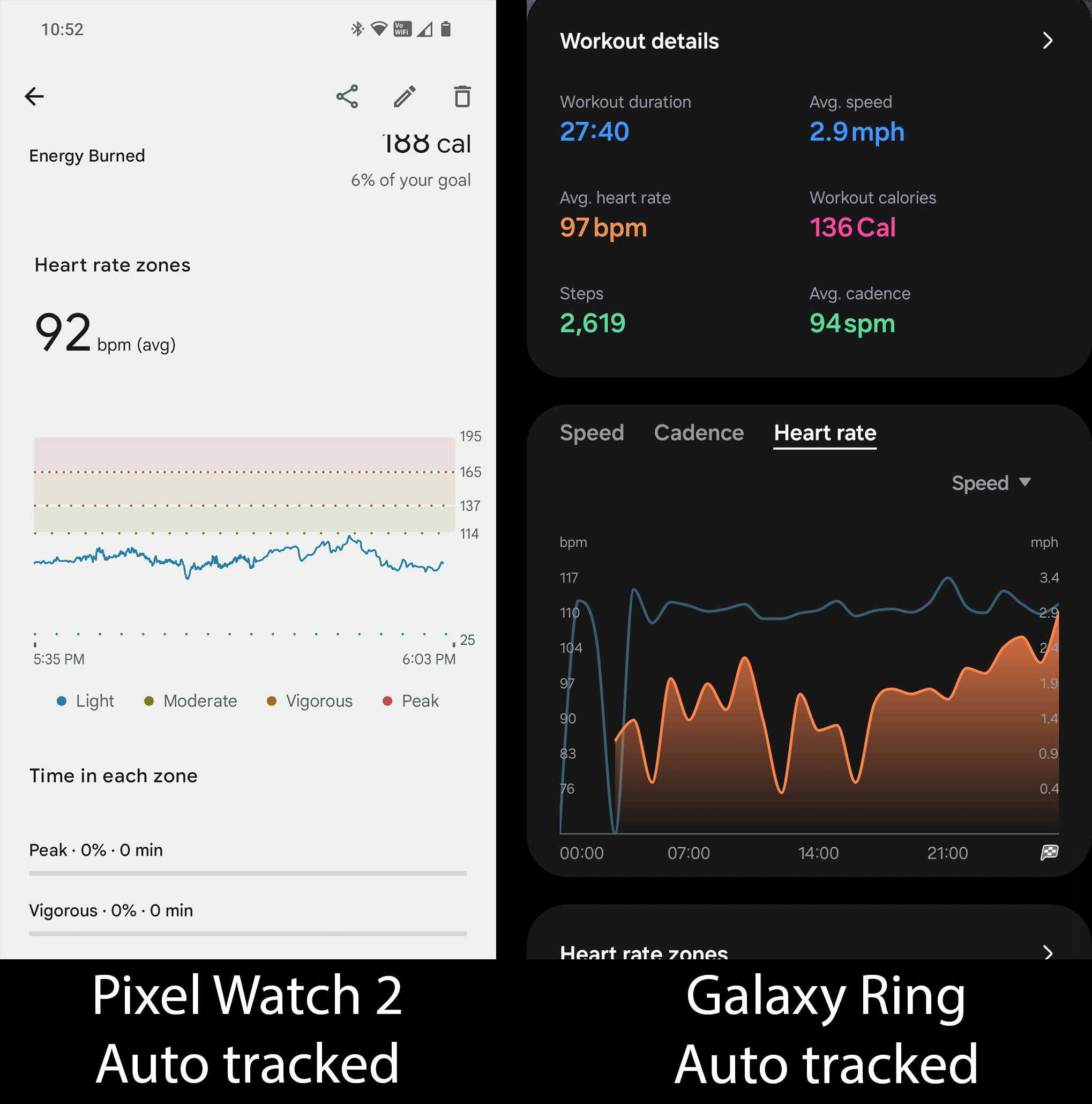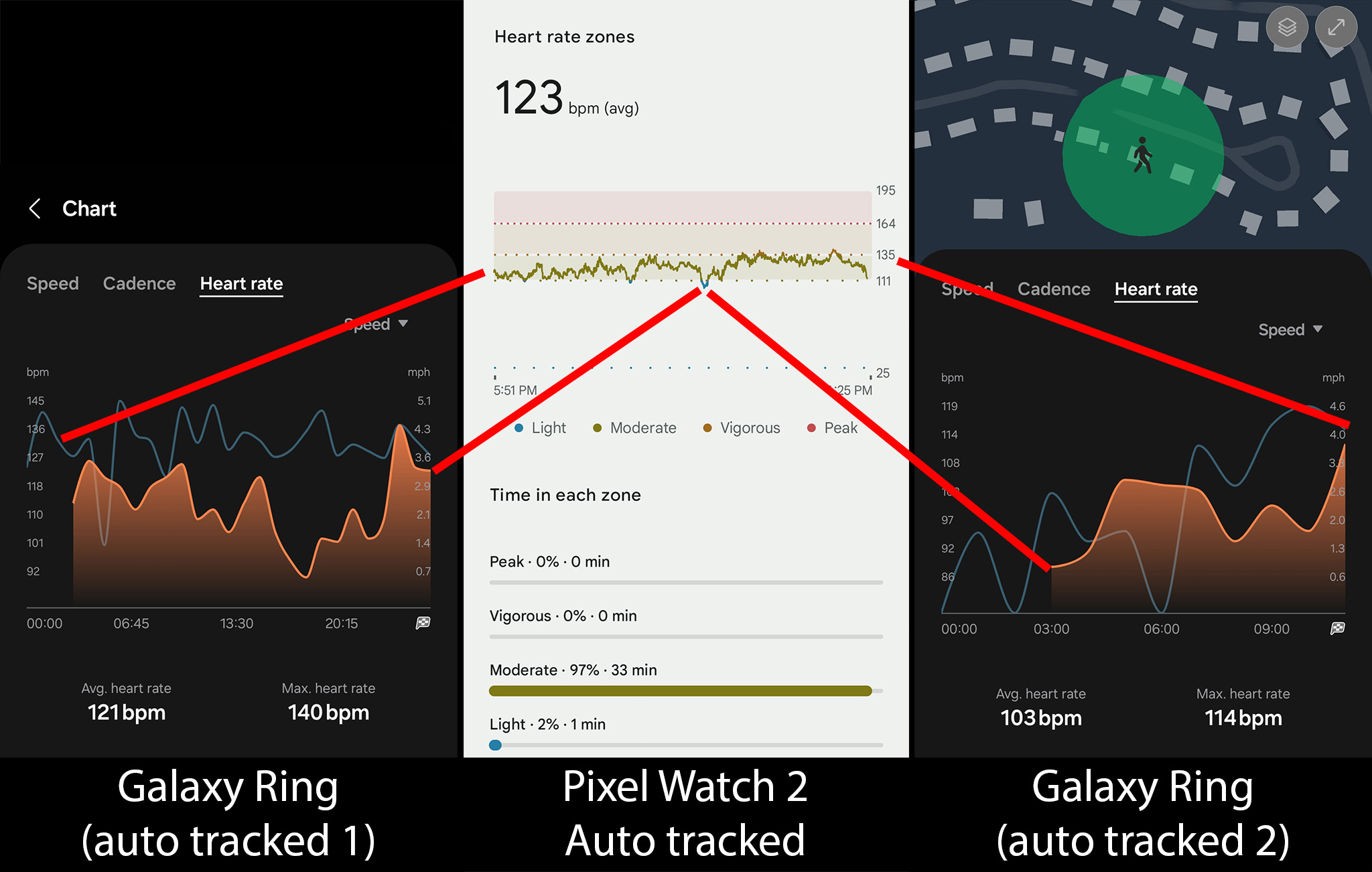I’ve never been a person who enjoys wearing a watch. Even though I’ve used dozens of smartwatches over the years, I seldom wear one all day long. That’s where a smart ring comes in for me. As someone who already wears a wedding band every day and finds it comfortable, I had hoped a smart ring would feel like the ideal form factor when compared to cumbersome fitness straps or bulky watches.
The Samsung Galaxy Ring is the latest smart ring to try and woo customers over with the concept, which started back in 2015 with the release of the first-generation Oura Ring. But if you were hoping to replace your smartwatch with the Galaxy Ring, you’re going to need to temper your expectations.
The Samsung Galaxy Ring is designed for 24/7 health tracking and little else. It’ll automatically track walking, running, and even sleeping, but lax software integration means manual workout tracking is nearly nonexistent and data accuracy is questionable, at best. It lacks AFib detection, something the Ultrahuman Ring Air recently added. Even the « find my ring » feature only really works on Samsung Galaxy phones, a hugely missed opportunity for Samsung to one-up the competition.
But not all is lost. While Samsung has a lot of improvements to make, all of them are software-related. The hardware is gorgeous, fits nicely, and is supremely comfortable to wear. This will be a solid product once Samsung irons out the issues — especially since there’s no monthly subscription. Hopefully, for Samsung, things will get better before our final review in a few weeks.
About this review
I’ve been using the Galaxy Ring for seven straight days as of the publishing of this review. My gold size 10 Galaxy Ring has been paired with a Samsung Galaxy S24 Ultra running One UI 6.1.
Price and availability
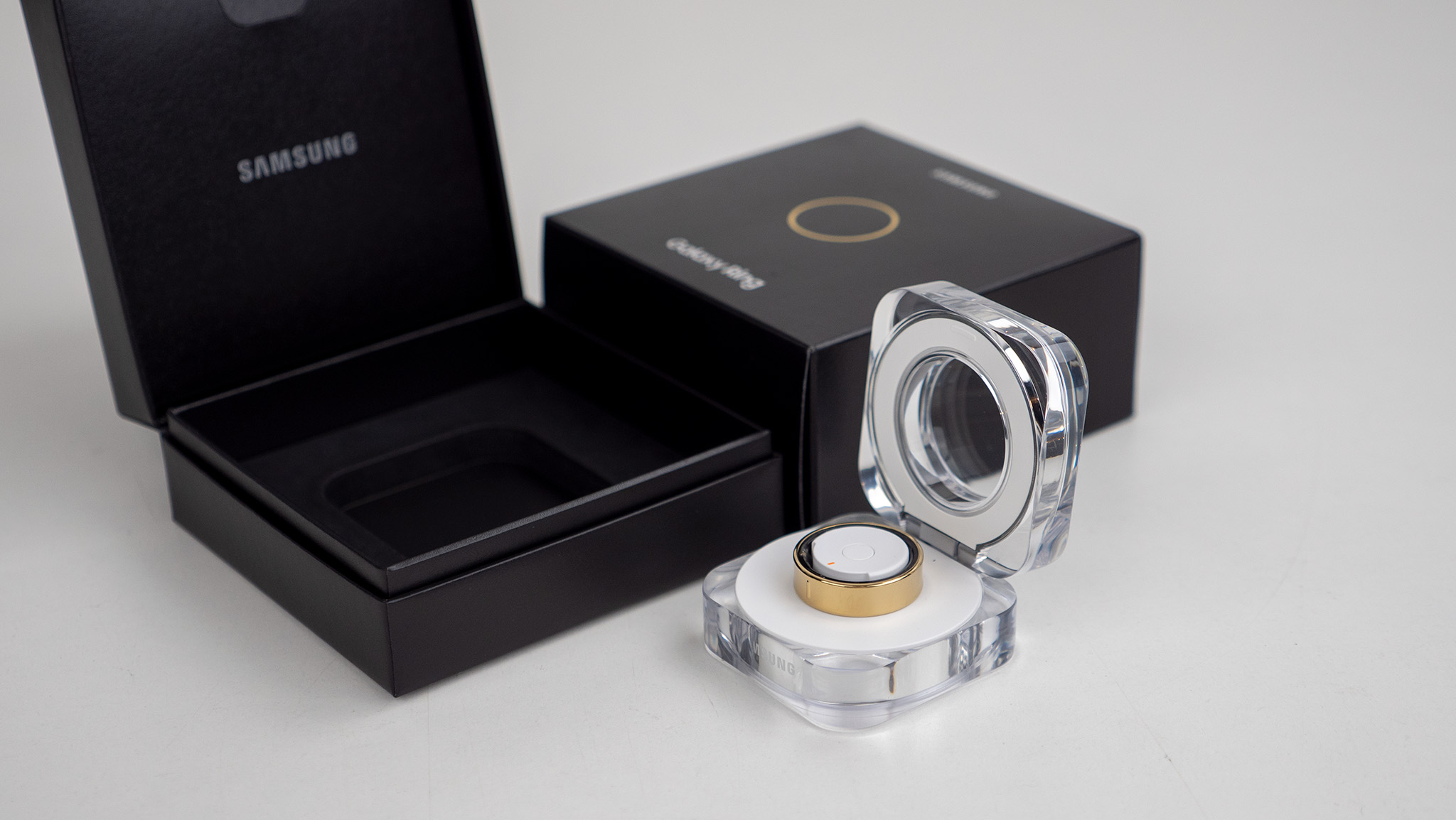
The Samsung Galaxy Ring is available for $399 and comes in three classic ring colors: silver, gold, and black. As of this review, the Samsung Galaxy Ring is on backorder but Samsung has allegedly ramped up production substantially to meet demand. The Galaxy Ring currently takes a few weeks to ship out once ordered.
To purchase a Galaxy Ring, you’ll first need to spend $10 on a sizing kit. That comes with a $10 credit towards the purchase of a Galaxy Ring, so the sizing kit is effectively free once you buy a Ring. Samsung makes Galaxy Rings in standard ring sizes 5–13.
Unlike its biggest competitor, the Oura Ring Gen 3, the Galaxy Ring doesn’t require a monthly subscription to access your data. All that is handled through the Samsung Health app, which works with any Android phone. Samsung users with a Galaxy phone that sports Galaxy AI built-in, like the Galaxy S24 Ultra, will get extra insights for their data powered by Galaxy AI.
Hardware and design
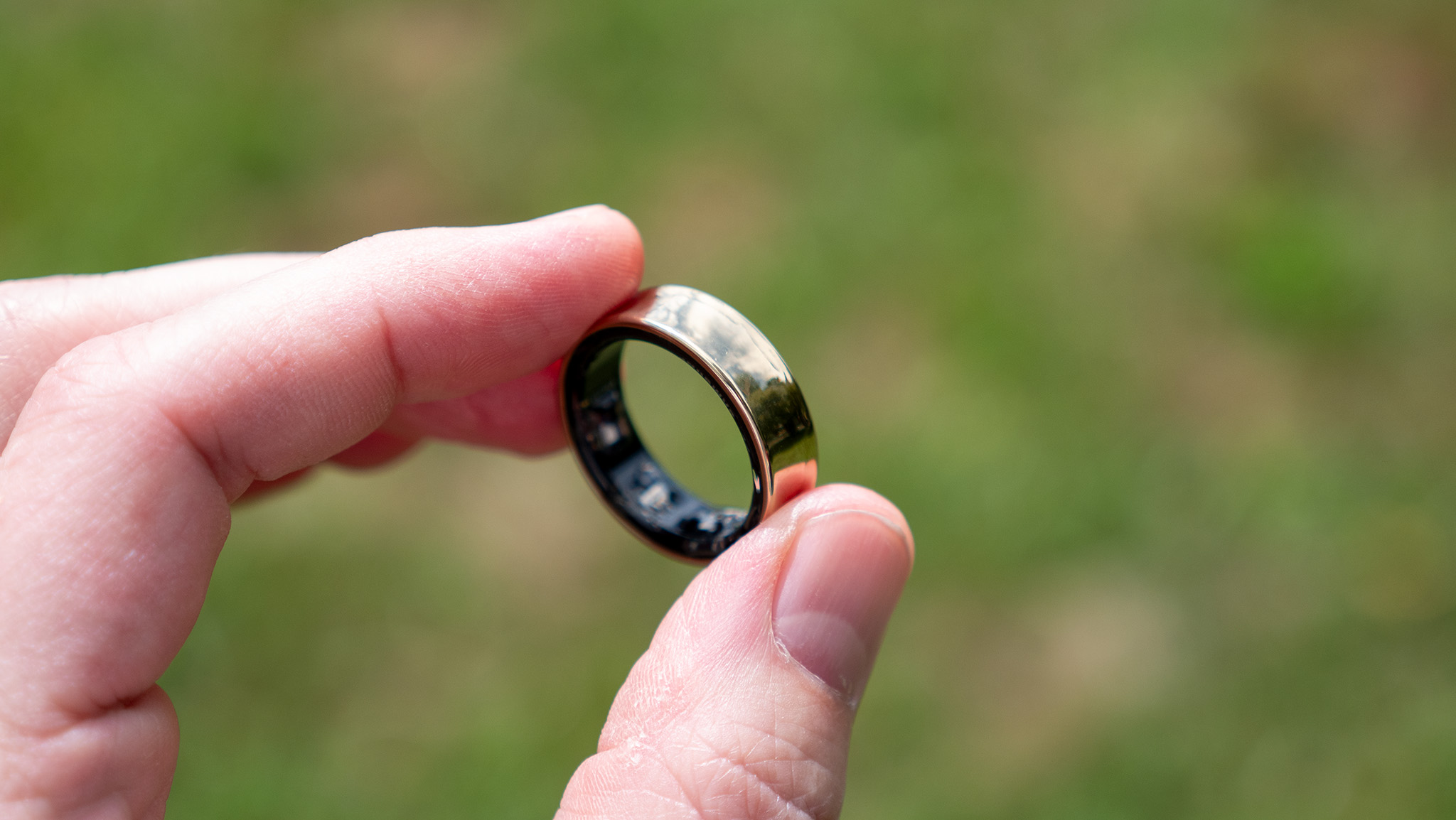
If I could get true feature parity, I’d swap out a smartwatch for a smart ring nearly any day of the week. Except for some kinds of workouts, a smart ring is a significantly more comfortable device to wear 24/7, and the Galaxy Ring is no exception.
Samsung’s hardware design is largely excellent, stuffing a battery and tons of tech into a svelte ~2.6mm thick ring. This is notably thicker than some standard rings — like my gold wedding band — but it’s not so thick as to feel more noticeable on my finger than a standard ring.
Samsung’s concave design helps to make the ring look thinner than it actually is, and the titanium construction is both impressively light and quite durable. Over the past week, though, I’ve already scuffed up the edge in two places, although this isn’t noticeable unless you look very closely.
Thankfully, that concave design seems to work well to keep the center of the Ring from getting as scratched as the edges.
On the underside, you’ll find an orientation indicator letting you know how to wear the ring. This line should always line up with the middle of the underside of your finger as it ensures the Ring’s sensors are in the most optimal place. I didn’t find that the Ring would rotate much throughout the day but I still checked the indicator’s location regularly as a habit.
| Category | Galaxy Ring |
|---|---|
| Dimensions | 7.0mm (width) x 2.6mm (depth) |
| Weight | 2.3-3g |
| Materials | Titanium grade frame |
| Water resistance | 10ATM, IP68 |
| Colors | Titanium Black, Titanium Gold, Titanium Silver |
| Sizes | 5–13 |
| Connectivity | Bluetooth LE 5.4 |
| Sensors | Accelerometer, PPG, skin temperature |
| Battery | 18mAh-23.5mAh, 40% in 30 minutes |
| Charging cradle | 361mAh |
The Ring fit nicely on the middle finger of my right hand where I found that particular finger shape to be better for wearing a ring than my index finger. It’s more comfortable, overall, but it also doesn’t get in the way like it would when I tried to wear it on my index finger.
Samsung recommends wearing it either on the index or middle fingers if you want to use the gesture feature, so this is right in line with expectations. Gestures are something unique to the Galaxy Ring and an advantage Samsung has over competitors, even if they are currently a bit limited in scope.
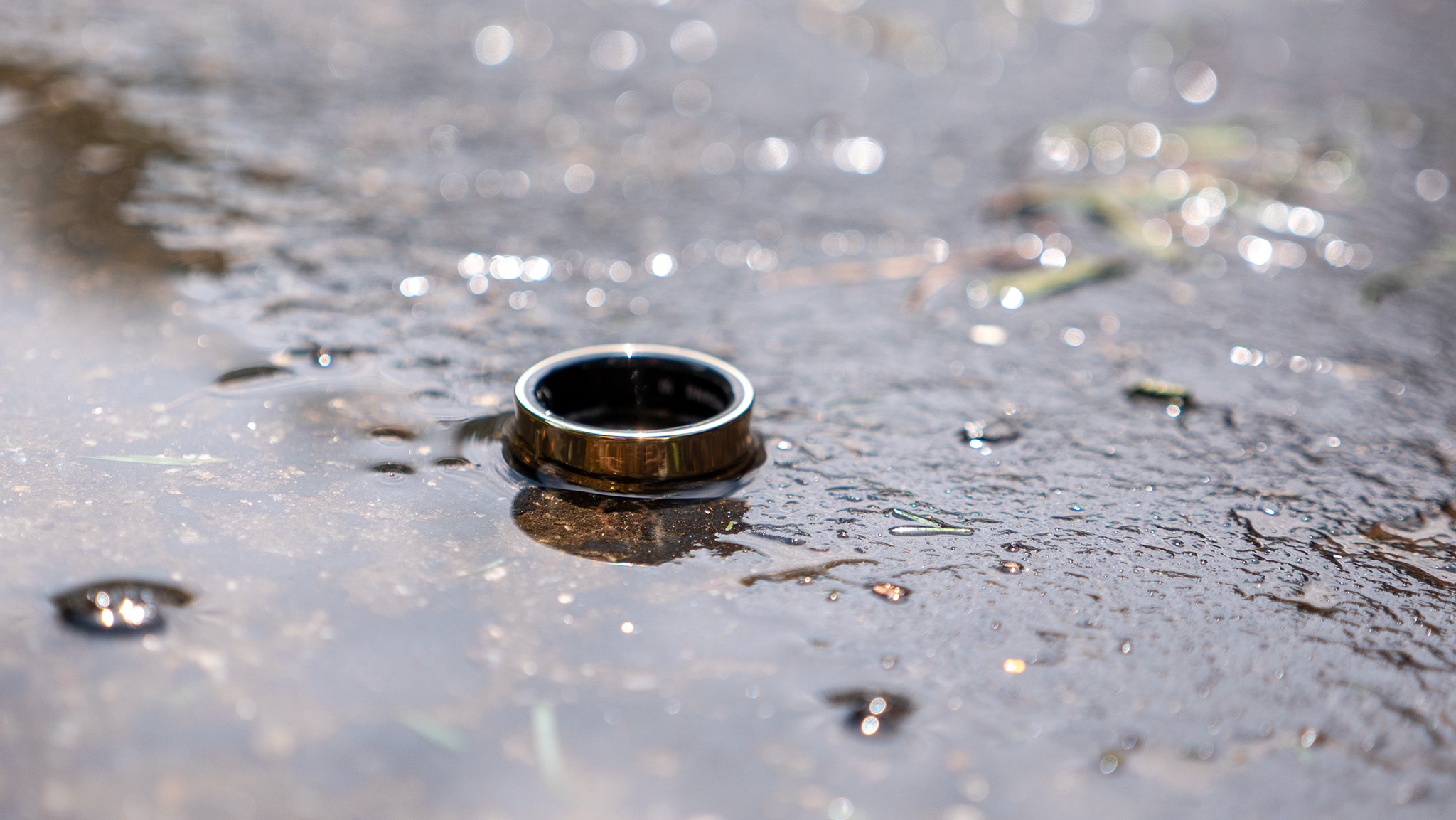
I haven’t been able to test out the gestures during this initial review phase because my Galaxy S24 Ultra doesn’t have One UI 6.1.1 yet, but Android Central’s Managing Editor Derrek Lee and I already tested them out at the Galaxy Watch hands-on event and they worked well there.
It’s worth noting that there are only two main gestures right now: take a photo, and stop an alarm on your phone. To perform either of these actions, you’ll double-tap your ring-wearing finger and thumb together in the air as if you’re pinching something twice.
The Galaxy Ring’s two most unique features are gesture support and the ability to remotely find a lost ring, but both only work with certain Samsung Galaxy phones.
Samsung also supports a « Find my device » feature that works identically to other Samsung Galaxy devices. Open the Galaxy Wearables app, then tap find on the main menu. The app will give you a rough location of where the Ring is — or where it was last detected if it’s not in your general vicinity — including a handy GPS map using Bluetooth for local location.
The Galaxy Ring doesn’t vibrate or make noise, which means that it doesn’t support giving you notifications. That also means that it’s a little difficult to find, especially if it fell between the couch cushions or rolled under something like a fridge or stove.
The app lets you rapidly blink the lights on the Galaxy Ring’s sensors but this is, largely, only useful at night or in a dark room. The lights simply aren’t bright enough to be seen during the day or in any kind of bright lighting.
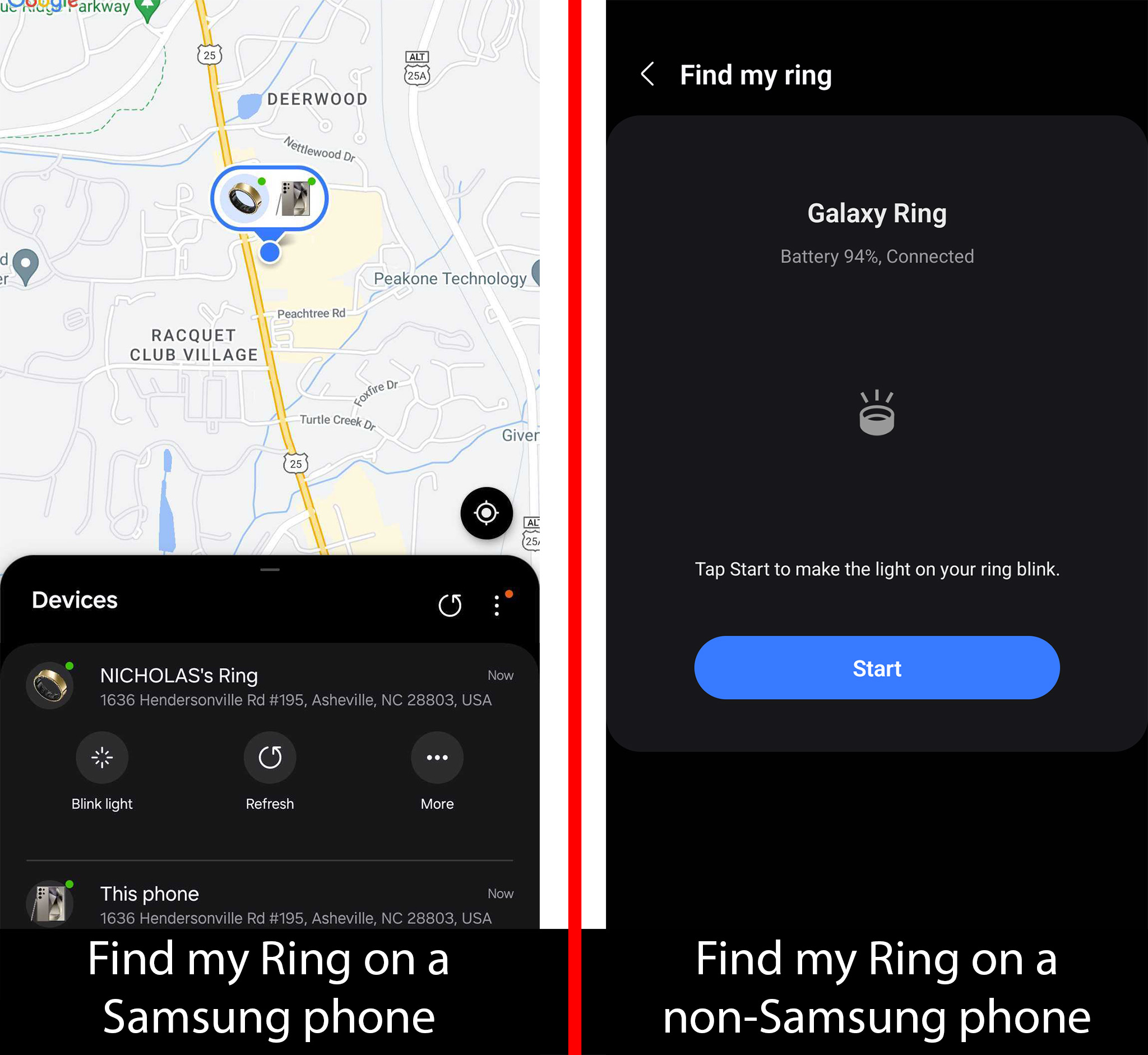
The other issue is that the « find my device » functionality only works on Samsung Galaxy phones. The Samsung Find app is exclusive to the Galaxy Store. Sideloading the APK doesn’t work either as it requires hooks found in Samsung’s One UI to work.
Samsung could have made it work with Google’s latest Find My Device upgrade — many other Samsung devices do — but it woke up and chose violence. The best you’ll be able to do with a non-Samsung phone is blink the Ring’s lights which, as I pointed out, isn’t all that useful.
Still, other smart rings don’t have a « find my » feature at all, so any way to find your lost Ring is an advantage for Samsung, even with its limitations.
Battery and charging
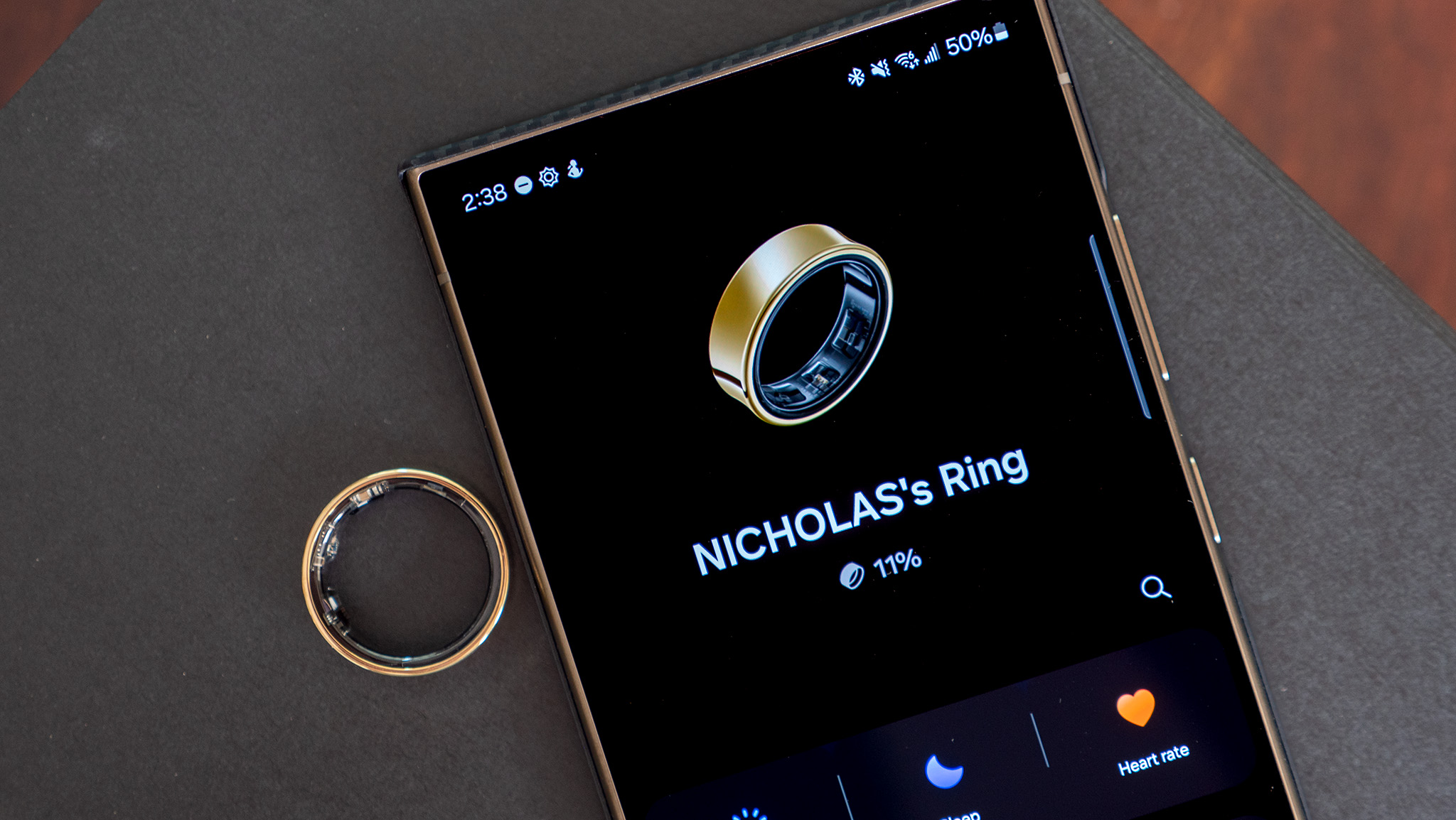
One of the main reasons to choose a smart ring over a smartwatch is battery life. Most of the best smartwatches need to be charged daily, while some fitness-focused options like the Garmin Forerunner 965 can last 1-3 weeks depending on how often you use GPS tracking.
My Galaxy Ring lasted 6 full days on the first charge, lining up nicely with Samsung’s estimate of 7-day battery life. At the end of the 6th day, it had 10% battery left — plenty to still perform sleep tracking that night — with me charging it on the 7th day.
Remaining battery percentage can be tracked both on the Galaxy Wearables app and with the Ring itself. Just take off the ring and look at the indicator LEDs inside for a few seconds. They’ll flash green indicating the battery percentage left in 25% increments. Four flashes mean between 75%-100% battery is left, three flashes for 50%-75%, etc.
Like the best earbuds, you’ll charge your Galaxy Ring using the included charging case. This case has its own battery with enough capacity for several full Ring charges. It also charges via USB-C, so it’s convenient to quickly charge and take on the go with you if you need it.
The Galaxy Ring has true week-long battery life, and the included charging case works like a wireless earbuds case for easy travel.
The case itself it gorgeous, with a transparent, flashy design including a ring of LEDs that illuminate when opening the hinge. This ring is used to display the case’s remaining battery life, and tapping the button can also initiate pairing.
Like many Samsung devices these days, though, charging the Galaxy Ring is abysmally slow. A 30-minute charge resulted in a measly 50% Ring charge, while it took a full hour to top-up the tiny ~20mAh battery. No doubt, Samsung makes the charging so painfully slow in an effort to prolong battery longevity but at least you only need to charge it once per week.
Sleep tracking
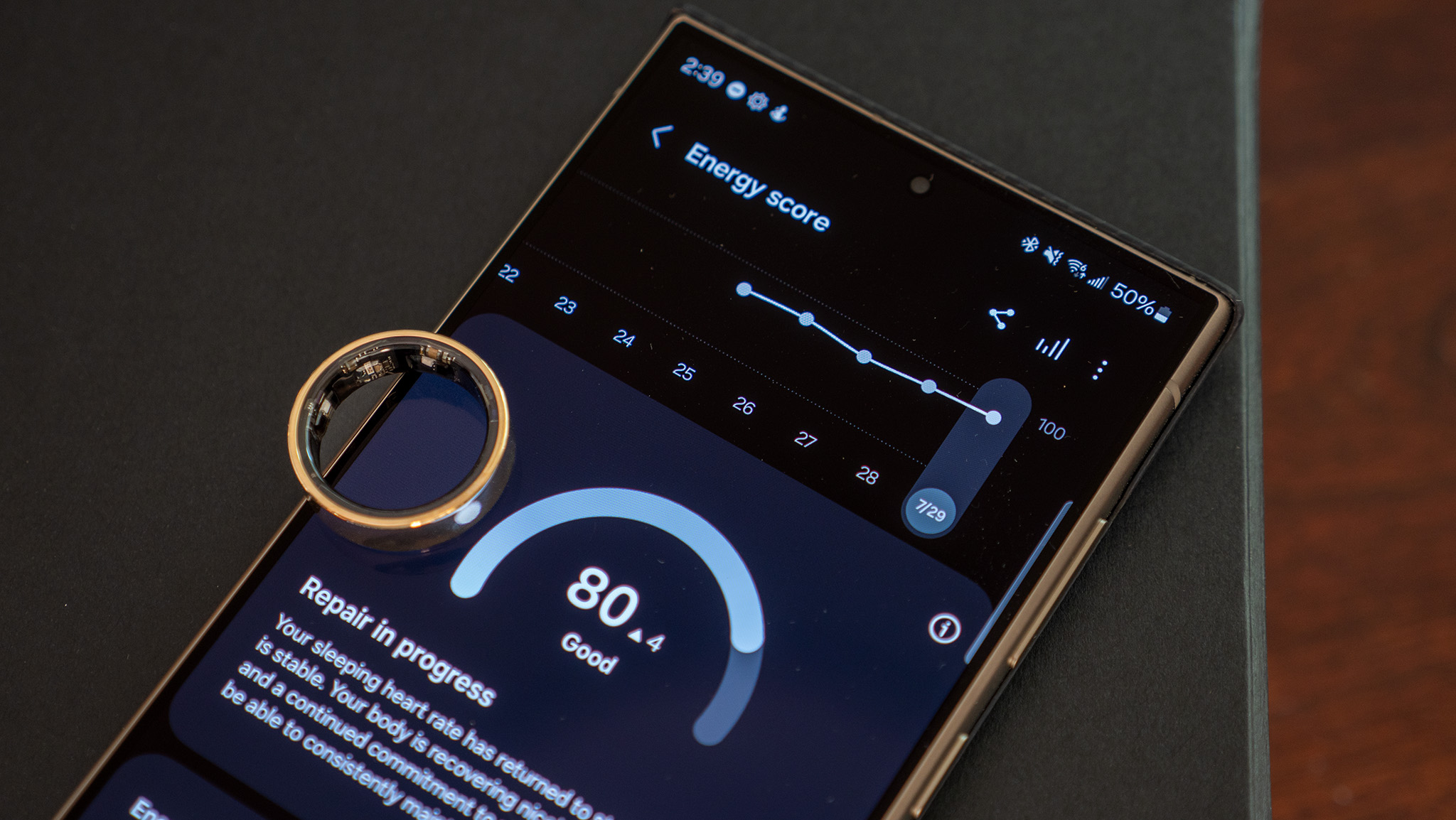
I hate wearing a watch to sleep. It’s not something I do outside of the occasional smartwatch review, but I’ll continue to wear my Galaxy Ring to sleep because it’s so darn comfortable. Rings are a lot more comfortable for me overall so this comes as no surprise as a person who doesn’t even wear a watch most of the day, let alone at night.
If you’ve worn a Galaxy Watch to sleep before, expect the same kind of metrics from a Galaxy Ring. That, in and of itself, is a triumph. A smaller, more comfortable device that can get the same kinds of readings for sleep data as a Galaxy Watch Ultra is truly a fantastic proposition.
The problem is that Samsung’s sleep data isn’t considered the best in the industry by any means, and bands like the Whoop 4.0 or smaller smartwatches like the Pixel Watch 2 present far more accurate data.
Of course, much of this is going to come down to alignment and fit. Smartwatches need to be worn fairly tightly in order to get an accurate reading. Move around too much at night with a loose wristband and you might as well just delete the tracking data. Likewise, a Ring that spins or wobbles a lot on your finger won’t do you much good.
For this reason, I started wearing the Ring on my index finger after the first few nights, but it didn’t seem to affect overall accuracy much.
Sleep tracking was largely inaccurate compared to the Pixel Watch 2 which is the gold standard in Android smartwatch sleep tracking.
The Samsung Health app is chock full of great little details and well-presented information, from the prominent sleep score to the individual metrics and easy-to-read graph that break your sleep down into awake, light, REM, and deep sleep patterns.
Below the sleep score is the breakdown of what metrics fueled the score, including sleep time, physical recovery, restfulness, mental recovery, and sleep cycles. I’m a very light sleeper by nature, and the Ring picked that up handily.
But while I initially felt good about the overall sleep score, diving into the data made me feel less confident in it. I often noticed blips in the graph where no data was collected at all. Some of this is down to fit, but there’s no way to control my movements while sleeping, which means data accuracy will vary from person to person.
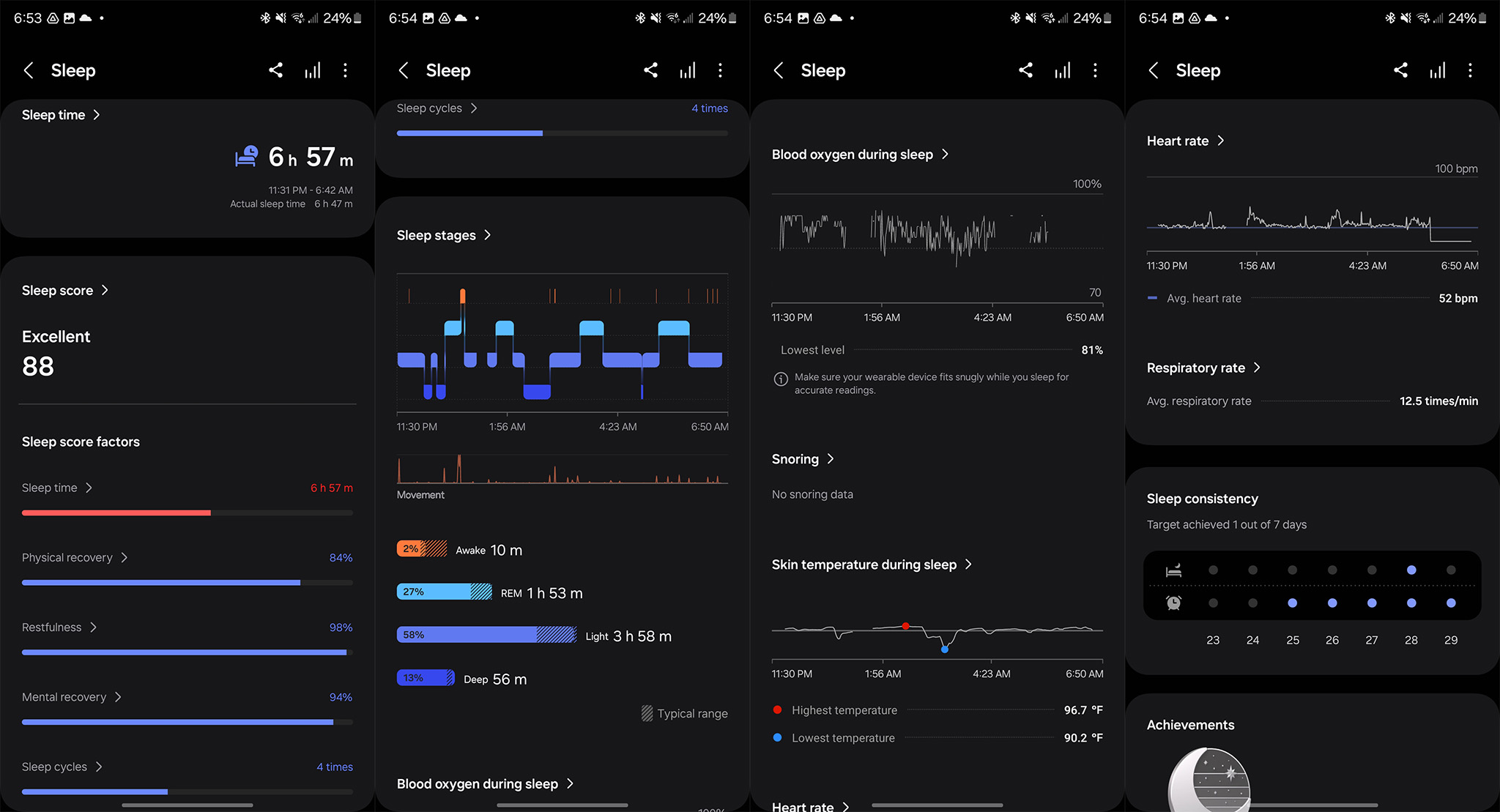
Other data points like blood oxygen and skin temperature while sleeping should also be taken with a grain of salt. Skin temperature readings from a finger will be different from a wrist or even a torso band because of their location — some people like heavy, heat-trapping blankets, while others may put their hands under a pillow, both of which could produce inaccurate readings.
Samsung provides lots of sleep tracking data but I’m not sure I trust its accuracy.
Daily energy score is calculated by combining all the available metrics, but my number was never quite accurate because the Ring never successfully detected any of my workouts at the gym, which you’ll read about below. If I was going to plan my day around that energy score number — which is the entire purpose of it — it’s likely I’d have a less active day than I should.
One YouTuber showed how the Galaxy Ring lines up with other bands and watches, putting it in line with the rest of the Galaxy Watch line and right in the middle of most other sleep and fitness-tracking wearables. In short, it’s not bad, but it’s not great, either.
Fitness tracking
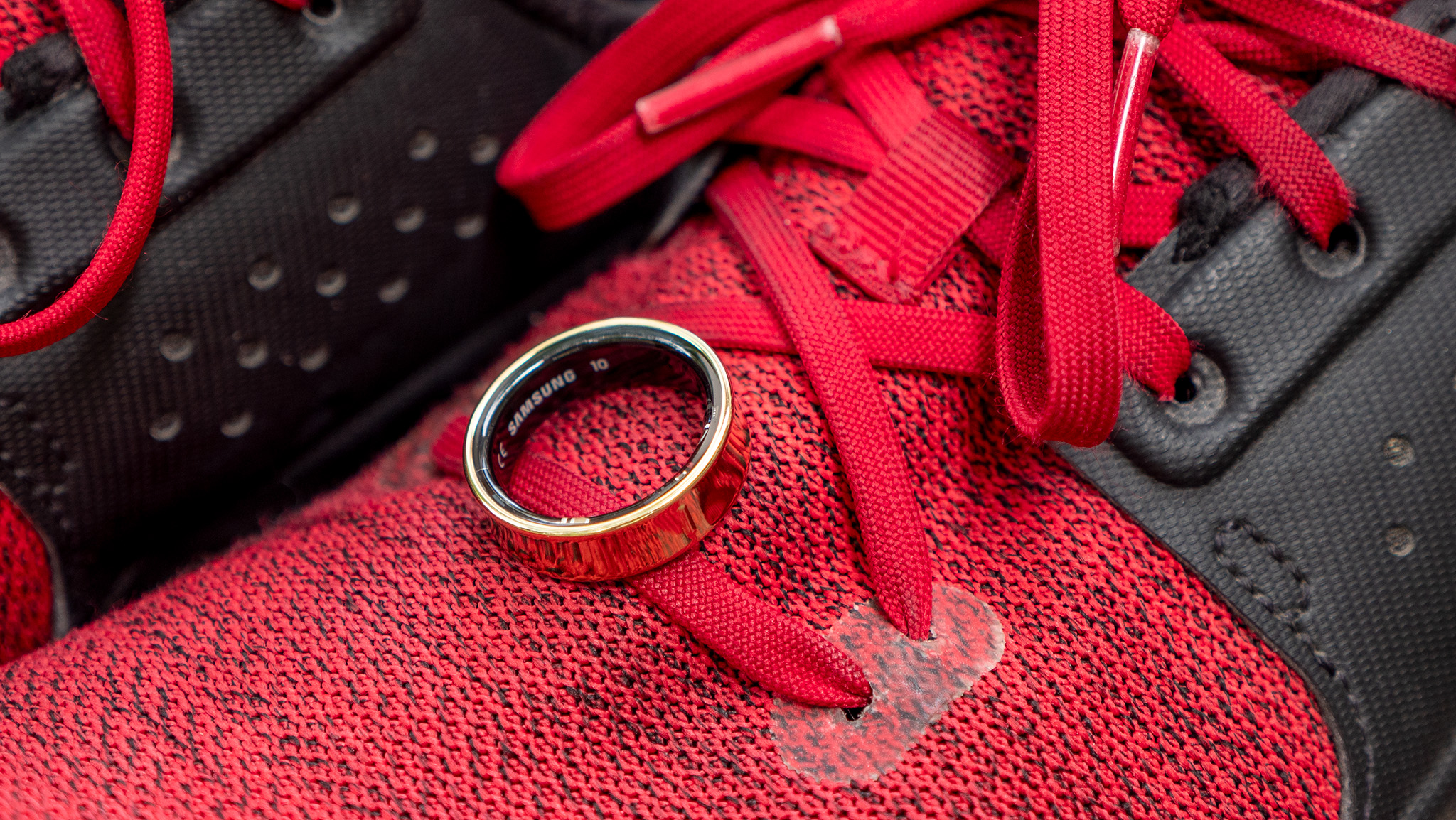
My biggest disappointment with the Galaxy Ring revolves around fitness tracking. I never expected this to replace a smartwatch because of the lack of a screen — I primarily wear a smartwatch while working out to monitor my heart rate — but Samsung’s software is seriously lacking some necessary fitness tracking requirements and it makes it nearly useless at a gym.
While going on a neighborhood walk or a hike, heart rate tracking seemed to be generally good and accurate compared to my Pixel Watch 2. I was pleasantly surprised at how effortless and transparent tracking was, but this is where my positive impressions end.
First off, if you’re not a runner or don’t plan to use the Ring to track a walk or a hike, don’t bother getting one. Automatic workouts are only supported for walking or running, and even then, I found that automatic tracking only seemed to work when I walked or ran outside. Even then, shorter 400m runs at the gym — including outdoor runs — were never automatically detected in my week-long testing.
Part of the problem is the polling rate. Heart rate data is only recorded every ten minutes — to save battery — and this doesn’t seem to be often enough to detect a workout successfully. Samsung uses other sensors inside to help with detection but they didn’t seem to do much good for me.
I went to the gym several times — hour-long workouts at a CrossFit-style gym — but all I saw from the Ring was a blip or two on the heart rate graph showing an elevated number. That was during the best of times. At the worst of times, the Ring didn’t grab any heart rate data during my workouts at all.
All in all, I’m not inclined to recommend this Ring as a fitness-tracking tool.
When I asked Samsung about this, I was told that starting a manual workout from the Samsung Health app should solve my problems. Unfortunately, this didn’t work. Any manual workout started from the Samsung Health app never recorded any Ring data. All I got was a generic calorie burn value relative to the workout I chose and the length of the workout.
In other words, I might as well have not even bothered bringing the Galaxy Ring to the gym.
Other smart rings like the Oura Ring Gen 3 do automatic workout detection far better and will regularly detect a workout, then allow you to select its type after the workout was completed.
All in all, I’m not inclined to recommend this Ring as a serious fitness-tracking tool.
Competition
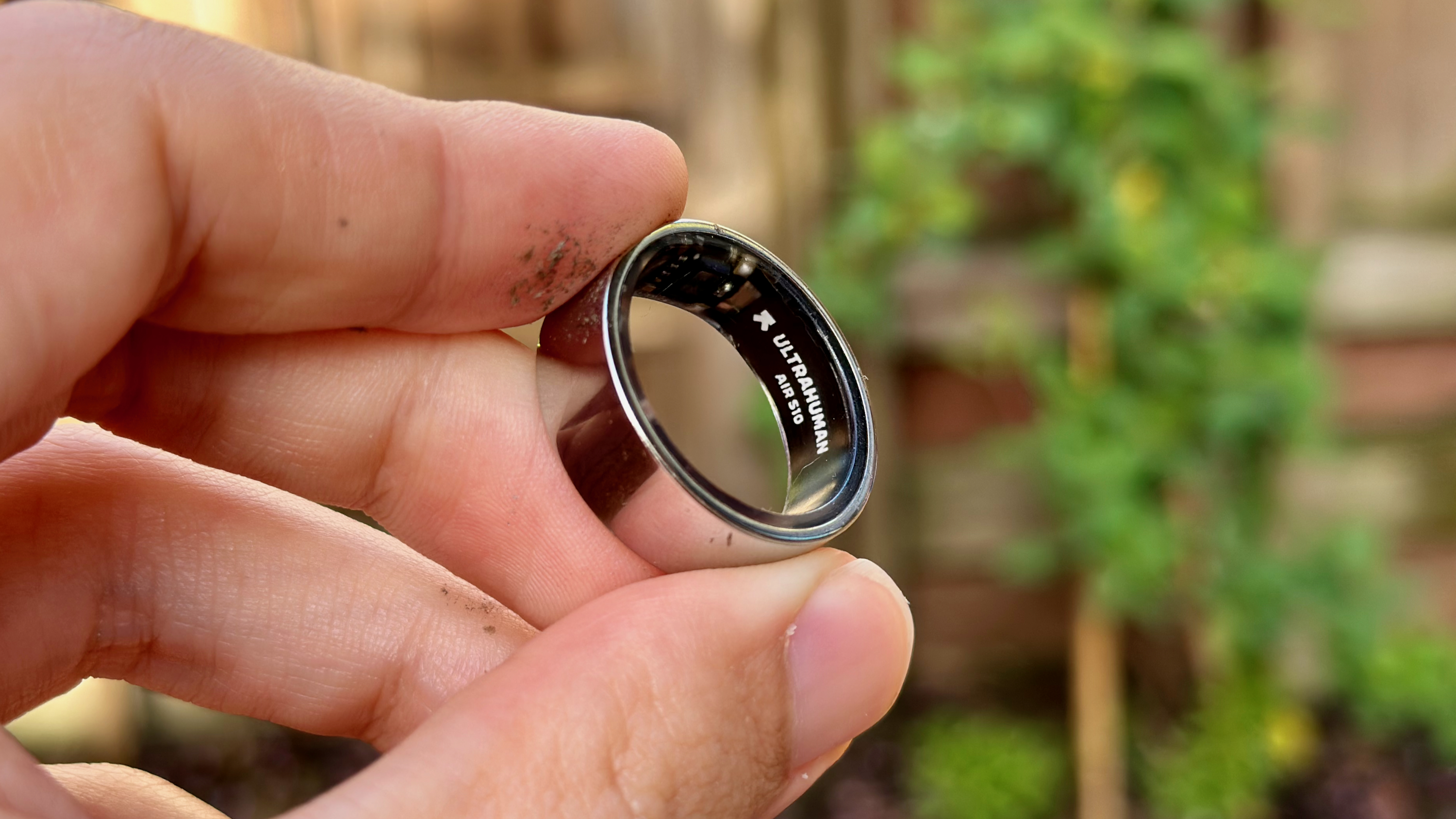
Despite being nearly three-years-old, the Oura Ring Gen 3 feels like a better overall buy for folks who are more serious about fitness tracking with a smart ring. Oura’s software does a better job of automatically detecting workouts and gives you far more options for categorization and tracking than Samsung. The big downside is that you’ll need a $6/month subscription to access that data.
But the Ultrahuman Ring Air is probably the best overall buy. It’s $50 less than the Galaxy Ring and, unlike Oura, has no subscription cost. Our Wearables reviewer Michael Hicks found the sleep tracking data to be quite accurate — unlike my experience with the Galaxy Ring. It even has AFib detection, something that’s vitally important in a 24/7 wearable. The downside is that active fitness tracking isn’t any better than the Galaxy Ring.
The best budget pick is the RingConn Smart Ring, which weighs in at $279 and features a unique squircle design. Activity and fitness tracking also isn’t great with this ring, but 24/7 health metrics and sleep tracking mean you’ll get most of the data you want for $120 less than Samsung’s offering.
Should you buy it?
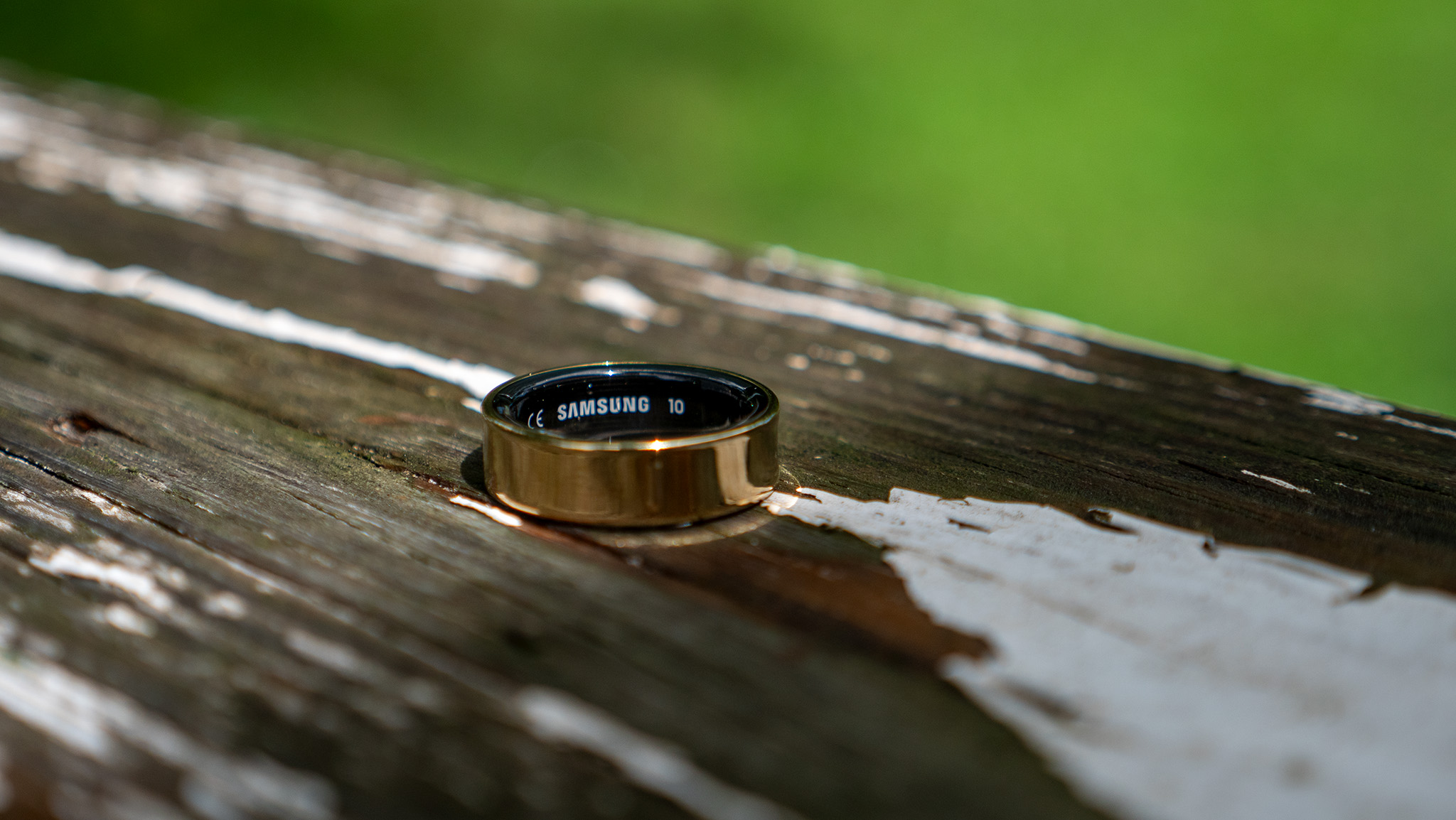
You should buy it if…
- You want a nice-looking ring that does more than look pretty.
- You want a smart ring without the expensive subscription.
- Casual 24/7 health tracking is more important to you than focused fitness or sleep tracking.
You shouldn’t buy it if…
- You want a serious fitness-tracking device.
- Your workouts involve more than just walking or running.
- You need a wearable with notification support (audible or vibration).
Samsung’s Galaxy Ring is a fantastic first-generation effort that eclipses some other smart rings by providing lots of data and features without a monthly subscription requirement. The hardware is sleek, and it’s comfortable to wear all-day, which is especially important for sleep tracking and automatic exercise detection.
But Samsung’s software feels early by nearly every measure. Automatic workout tracking is limited in scope to just walking or running and, even then, only works well when doing these activities for long periods of time or outdoors. Sleep tracking is comfortable but not nearly as accurate as a good smartwatch. Some data is even restricted to users who pair the ring with a Galaxy phone that has Galaxy AI built-in.
The hardware is stellar but I think it’s going to take a few months (or so) for the software to feel like it’s truly ready for primetime. The amount of data you get is superb, but the quality of that data seems a bit questionable at this point in my review process. Early adopters will likely be thrilled with the technology packed in the ring, but anyone serious about quality fitness or sleep tracking should look elsewhere.
Smart rings are the ideal form factor, but Samsung’s overall execution leaves a bit to be desired. Even as a 24/7 health tracker, other rings do it better because the Galaxy Ring is missing features like AFib detection. There’s simply no way I’d be happy if I spent $400 on this device and, for that reason, I can’t recommend it to most people today.
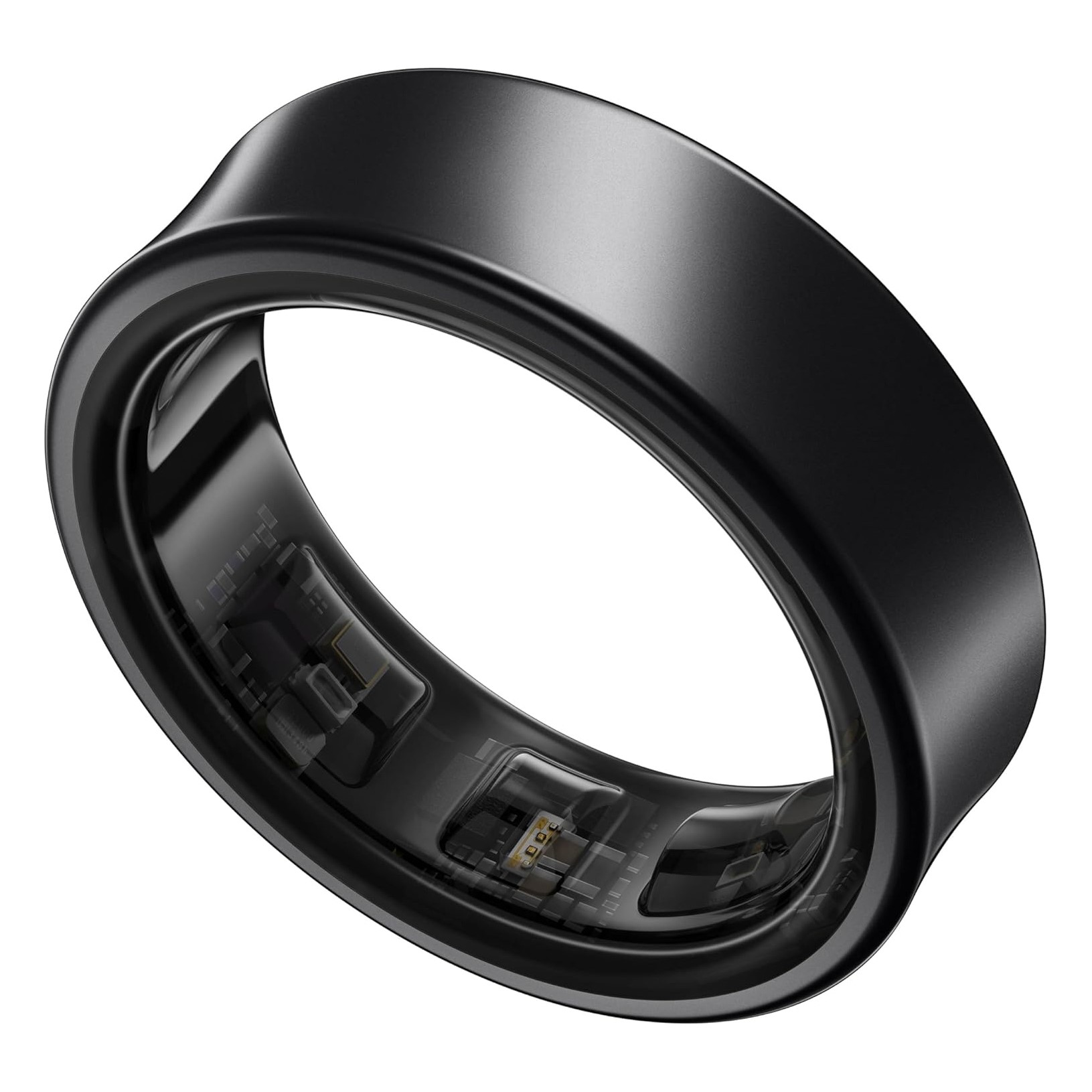
Samsung knocked it out of the park with gorgeous hardware design that features tons of sensors, week-long battery life, and a brilliant charging case. Samsung Health is a powerful app but it might need a bit more tweaking before this Ring’s data feels just right.
->Google Actualités



